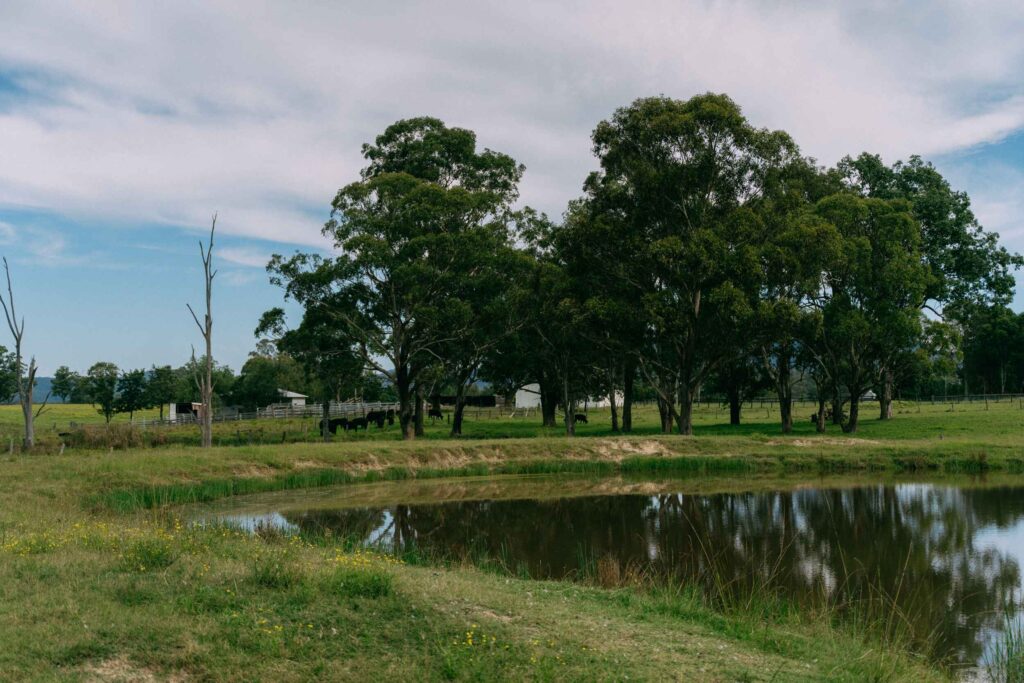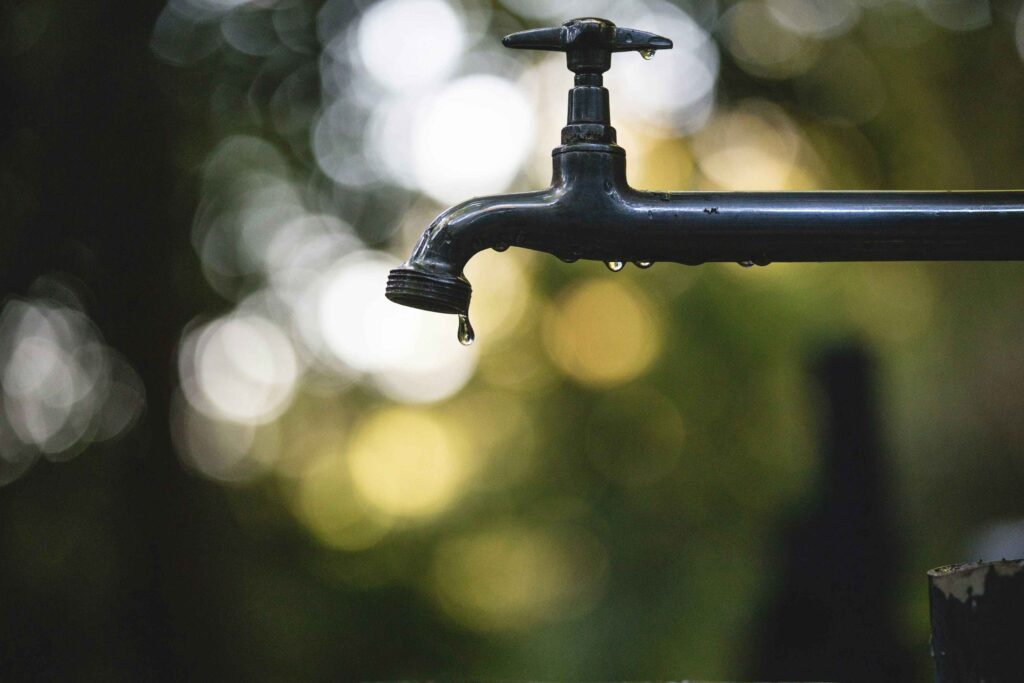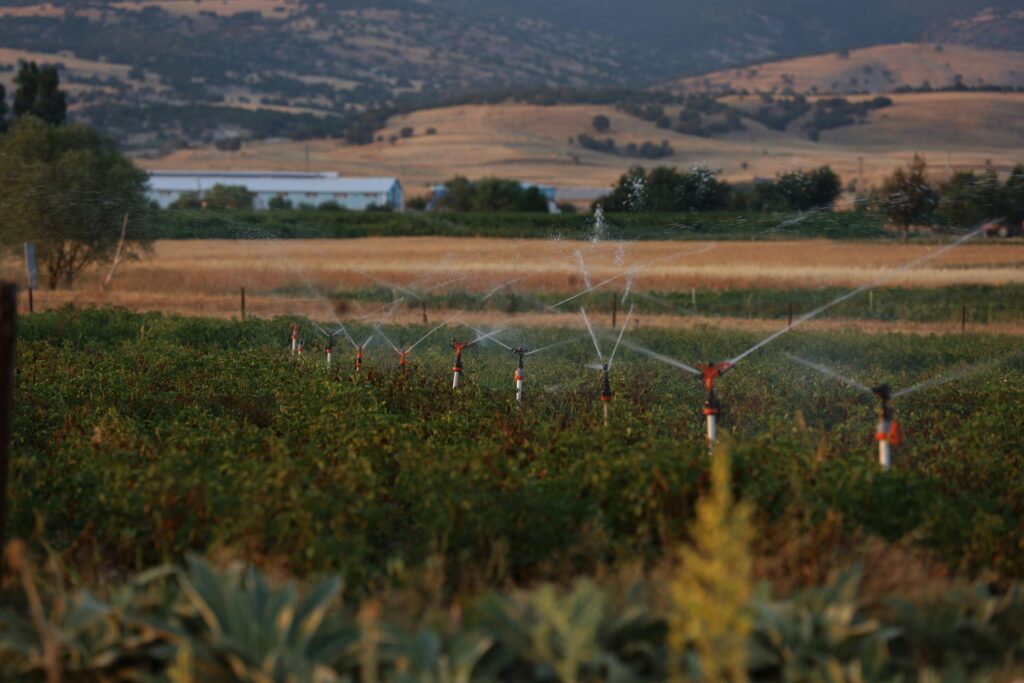Water is the foundation of any self-sufficient property so learning how to build a pond or dam is critical. Without reliable access to water, growing food, supporting livestock, and maintaining healthy soil becomes a constant challenge. That’s why ponds and dams are essential features for anyone serious about resilience and sustainability on their land.
Whether you have a small rural farm or a backyard homestead, understanding how to plan, build, and maintain a pond or dam can dramatically improve your water security. It acts as an insurance policy against dry spells, provides a habitat for wildlife, supports irrigation, and even enhances soil health around your property.

Why Ponds and Dams Are Important for Self-Sufficiency
When you’re building a self-sufficient lifestyle, every drop counts. Ponds and dams function as natural water catchments – capturing rainfall and runoff to store for use during drier times. Unlike relying solely on municipal water or rainwater tanks, having a well-designed pond or dam can give you greater control and independence over your water supply.
The difference between ponds and dams is mostly about scale and function. Ponds tend to be smaller, shallower, and often support aquatic life and recreational uses, while dams are larger earthworks built primarily for water storage and farm use. Both play valuable roles in self-sufficient living, but understanding which suits your property depends on your goals and terrain.
In the context of Australia’s increasingly variable climate, water storage is more than convenience – it’s a necessity. Long dry seasons, unpredictable rainfall, and rising temperatures mean that secure water access can make the difference between a thriving homestead and a struggling one.
Planning your pond or dam requires considering soil types, slope, and natural water catchment areas on your land. Poor site choice can lead to leakage, erosion, or insufficient water capture. We cover soil permeability and terrain considerations in detail in our Soil Types and Drainage guide, which is a great companion resource when planning your water system.
Planning – Choosing the Right Spot for Your Pond or Dam
Building a pond or dam starts with careful site selection. Reading the land is the first step – understanding how water naturally moves across your property helps you capture the most runoff and avoid problems later.
Look for natural depressions or valleys where water collects. The slope of the land should be gentle enough to hold water but not so steep that erosion becomes a risk. A well-placed dam wall on a natural contour can maximise water catchment and reduce construction costs.
Soil permeability matters. Heavy clay soils are ideal as they hold water well and reduce seepage. Sandy or gravelly soils might require lining to prevent water loss, which we’ll cover in the construction section.
To help plan your site, tools like topographical maps or GPS contour mapping apps can be invaluable. These allow you to see elevation changes and water flow paths before you start digging.
For small farms and homesteads, a minimum water storage of 500,000 to 1 million litres is a practical starting point. This volume supports irrigation, livestock, and household needs through dry periods.
Before moving forward, take a look at our Soil Types and Drainage page for a deeper dive into how soil impacts water retention and drainage on your property.
Construction – How to Build a Dam or Pond
Once you’ve selected the ideal spot, the next step is turning your plan into reality. Building a dam or pond can be a manageable DIY project for those with the right tools and know-how, but larger or more complex sites might require hiring professional earthmoving contractors.
DIY farm dam construction often involves careful earthmoving to create a dam wall or embankment, which holds back water in a natural or excavated basin. The design and shape of the dam wall are crucial – it must be sturdy enough to withstand water pressure and prevent leaks or breaches.
When building the dam wall, compacted earth, clay, and sometimes rock form the core structure. The crest (top of the wall) should be wide and stable, often with a gravel or rock surface to resist erosion. Proper spillways are essential to safely channel overflow water and prevent damage during heavy rains.
Lining options depend on your soil and budget. If your soil has high clay content, you may be able to rely on a natural clay lining to reduce seepage. Otherwise, synthetic liners such as heavy-duty polyethylene can be installed to make the pond watertight. While synthetic liners add upfront cost, they are effective for preventing water loss in porous soils.
Remember to check local regulations before you start digging. Different states in Australia – like NSW and Victoria – have specific legal requirements and permits for dam construction. These rules protect waterways, neighbouring properties, and ensure environmental safety. You can usually find this information on your state government’s water resources or local council websites.
Erosion control is another key consideration. Around your dam, plant native grasses and shrubs to stabilise soil and filter runoff. Installing sediment traps upstream reduces sediment build-up inside the dam, which helps maintain water quality and storage capacity over time.
Earthmoving and Dam Wall Design
When shaping the basin and dam wall, it’s essential to think long-term. A gently sloped internal wall helps prevent erosion and makes future maintenance safer and easier. Steeper walls may store more water in a smaller footprint but are more prone to collapse and can be dangerous for livestock.
Include a spillway – a shallow, gently sloped channel that allows excess water to escape without damaging the dam wall. This is one of the most overlooked but critical features for long-term resilience. During high rainfall, a poorly managed overflow can wash out your dam wall entirely.
For smaller projects or backyard ponds, you may get away with a simple excavation and lining. But even at this scale, planning for overflow, runoff, and safe access is essential. A small, well-planned pond can still provide real utility – especially when integrated into a broader off-grid water system alongside tanks and grey-water reuse.
Use Cases – How to Use Ponds and Dams on a Homestead
A well-built pond or dam can be one of the most productive and multifunctional assets on your property. Beyond simply storing water, these features can support your food systems, reduce reliance on irrigation infrastructure, and create new life across your block.
1. Water Storage and Drought Resilience
The primary use of a dam is water security. Whether you’re irrigating a garden, filling troughs, or just preparing for long dry spells, having water stored on-site gives you control when the rain stops. This is particularly vital in Australia’s varied climate, where summer months can be unpredictable and harsh.
2. Watering Crops and Orchard Irrigation
If you’re growing fruit trees, vegetables, or grains, a dam can supply a gravity-fed irrigation system – cutting your water bill and reducing dependence on town supply or bore water. Connecting your pond to drip lines or sprinklers (see our Irrigation Sprinklers guide) can make watering large areas more efficient and sustainable.
3. Raising Fish (Aquaculture for Protein)
Homestead aquaculture is gaining popularity as a self-sufficiency strategy. Species like silver perch, barramundi, or yabbies thrive in Australian conditions and can provide a renewable, high-protein food source. You’ll need to manage water quality, oxygen levels, and feeding – but the rewards are considerable for those willing to learn.
4. Supporting Ducks and Livestock
If you’re raising ducks (see our Guide to Ducks), they’ll love having access to a pond. It supports their natural behaviours and helps control pests like mosquitoes and slugs. Livestock can also be watered directly from your dam, though fencing and controlled access are important to avoid fouling the water or causing erosion on the banks.
5. Rewilding and Attracting Beneficial Insects and Birds
Ponds and dams aren’t just utilitarian – they can also invite biodiversity back onto your land. By adding water plants like reeds or native sedges, your dam becomes a microhabitat. Frogs, dragonflies, pollinators, and birds quickly move in, creating a healthier, more balanced ecosystem that can reduce pest pressure naturally.
For those managing fruit trees or vegetable beds, attracting beneficial insects like wasps and hoverflies is a smart strategy. And birds – while sometimes a nuisance – often help by picking off caterpillars and grasshoppers before they can damage your crops. Water draws these creatures in, especially during dry months.
6. Firefighting Water Source
In rural Australia, bushfire preparedness is essential. A well-placed dam can serve as an emergency water source for firefighting, either by you or by emergency services. Many rural fire brigades use floating pumps and portable hoses to draw water from farm dams during active fire events.
For this reason, it’s wise to ensure clear vehicle access and maintain a perimeter around the dam that’s free of overhanging vegetation or fuel load. It’s not only good practice – it could make your property far more defensible in the worst-case scenario.
Maintenance & Safety
Once your pond or dam is built and in use, keeping it functional and safe over the long term requires some routine attention. Fortunately, most of the maintenance is low-effort and can be built into your seasonal rhythms.
Monitoring Sedimentation and Overflow
Over time, runoff from surrounding land will carry silt, leaves, and organic matter into your pond. This sedimentation gradually reduces your dam’s storage capacity and, if left unchecked, can lead to murky water and poor oxygenation – especially if you’re raising fish.
You can minimise this by establishing vegetation around the catchment area, especially on any slopes leading into the water. Swales and silt traps (shallow trenches or stone-lined barriers) are effective additions if your land sees a lot of runoff during heavy rain.
Regularly check your spillway and overflow outlets – especially after storms. Blockages or erosion here can quickly become structural problems if ignored.
Preventing Algae and Mosquito Breeding
Still water can lead to algae blooms, especially in shallow, sun-exposed ponds. While some algae are natural and harmless, excessive growth can deplete oxygen and harm aquatic life. Introducing floating plants like duckweed or native lilies can help shade the surface and reduce nutrient levels.
For mosquito control, ducks, frogs, and fish are your best allies. Mosquito larvae live in the water and are quickly consumed by aquatic life. If your pond is too small or shallow to support fish, consider using Bacillus thuringiensis israelensis (Bti), a naturally occurring bacteria that targets mosquito larvae without harming other wildlife.
Fence Safety for Livestock and Kids
A large, open body of water may seem benign – but it presents real risks for both animals and children. Dams with steep or slippery edges can be especially dangerous.
Installing a fence around your dam or pond is essential if you have young children, visitors, or livestock prone to trampling the banks. For small hobby farms, even a simple post-and-wire exclusion fence can make a big difference in safety and water quality.
If livestock need access to drink, designate one reinforced point – ideally with gravel or geofabric – to prevent erosion and allow controlled entry. Alternatively, use a pump or gravity system to deliver water to troughs away from the dam edge.
Conclusion: Every Block Benefits
Whether it’s a full-scale dam for livestock and irrigation, or a modest backyard pond to catch runoff and support biodiversity, building a water body on your land is a practical move toward resilience. It gives you control over one of the most critical resources – not just for plants and animals, but for the long-term productivity of your soil and the security of your household.
You don’t need earthmovers and a bulldozer to start digging. Many successful setups begin small: a hand-dug pond lined with clay or plastic, filled by rainwater and run-off. What matters is understanding your land, planning accordingly, and building something that fits both your climate and your goals.
For more on choosing land, managing soil types, and integrating water systems into your self-sufficient lifestyle, explore our Land and Soil categories.


